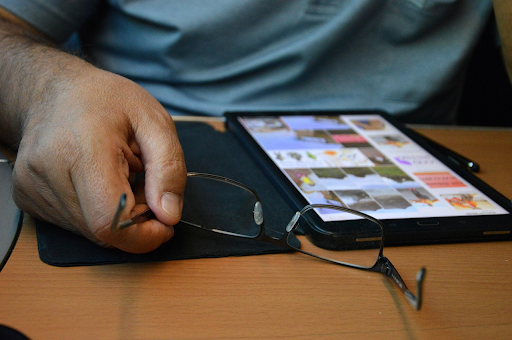Minds and bodies run in cycles. Focus rises, dips, and returns after recovery. When short pauses and real downtime become part of the day, output improves, mistakes fall, and fresh ideas show up. Rest is not a prize at the finish line. Rest is part of the work.
Why Short Breaks Sharpen Focus
Attention has limits. It fades with steady effort and rebounds after a brief pause. Spending just five to fifteen minutes away from a task can clear mental clutter and bring back a sense of control. The minutes after a break often feel quick and direct. Work that seemed stuck starts to move again. Spacing short breaks throughout the day is more effective than waiting until you are exhausted, because frequent pauses keep you refreshed instead of forcing you to push through at reduced strength.
How you spend the break matters for the quality of the reset, so choose activities that shift your focus without demanding much energy. Some decide to read a chapter of a book, others go for a short walk, some watch a brief and interesting video on YouTube, and some enjoy quick entertainment online. Take a moment to play Great Rhino Megaways now in short and engaging sessions if you want a lively mental reset filled with bright visuals and upbeat energy.
What Rest Does for the Brain
Even when attention drifts, the brain continues working quietly in the background. It connects bits of information, strengthens new learning, and helps ideas settle into place. That is why solutions often surface only after you step away from a task. Taking a brief pause eases stress and makes judgment steadier for better decisions. When judgment is clearer, teams need much less time fixing avoidable mistakes.
Creativity improves when the mind has room to wander without pressure. A short break lets your brain approach the problem from a different angle and notice possibilities that were not obvious before. This steady rhythm of focused work followed by short recovery leads to clearer thinking, smoother problem-solving, and better results overall.
Sleep Sets Up A Productive Tomorrow
During deep sleep, the brain strengthens useful connections and trims the rest. After a solid night, complex tasks feel lighter and setbacks are easier to handle. Learning is also retained more effectively, and recall speeds up the next day. In contrast, skipping sleep may add hours to the clock, but each hour costs more to use. Over time, that trade drains output and dulls judgment.
Protecting sleep starts well before bedtime. Late caffeine, bright screens in bed, and irregular hours disrupt the natural wind-down that prepares the body for rest. A steady routine helps. Dimmer lights in the evening and a short reading session can cue relaxation and make it easier to maintain a consistent pattern.
Passive Rest and Passive Rest
Not all breaks work the same for everyone. Passive rest is useful when your energy is truly low and you need quiet recovery to regroup. Active rest tends to wake the body and mind more quickly because simple movement restores circulation and clears mental fog. A brisk walk, climbing a few flights of stairs, or a few gentle stretches bring blood back to muscles that sit all day and make returning to tasks easier. Small chores like watering plants, washing a few dishes, or stepping outside for fresh air give the mind a gentle change of scene without adding new pressure.
Mindful rest pairs well with physical breaks and often takes very little time. One minute of slow, steady breathing reduces stress and calms the nervous system. It also reduces physical tension in the shoulders and jaw. Try closing your eyes, breathing in for four counts and out for six counts, and notice how thoughts slow and focus returns. That tiny pause can turn a frantic afternoon into a steadier, more productive stretch of work.
Boundaries that Protect Meaningful Work
Rest and deep work support each other. Clear start and stop times make it far easier to focus. When a work session has a defined end, the mind commits fully because recovery is on the way. Knowing a break is coming makes it easier to stay focused. Once you return, your attention is stronger, and it’s easier to make progress.
Design a Day that Balances Effort and Ease
A simple routine smooths the day. Start with one demanding task when your mind is fresh and work until attention fades. Take a short break with movement or calm breathing, then return to the task or switch to something lighter and repeat. Save routine chores for low-energy times and take a real lunch away from your desk.
End the day with a quick review and a clear first step for tomorrow so your mind can let go. Your setup matters: natural light, an uncluttered surface, and a well-fitting chair cut friction. Silence notifications, put your phone face down and out of reach, and reduce nearby distractions so it’s easier to enter flow after each pause.
Light Rest Tracking for Better Focus
Rest works best when it feels natural rather than forced. A gentle approach to tracking can still be helpful without turning breaks into another task on your list. Pay attention to how long it takes before your focus begins to fade, and notice which break lengths leave you clear and steady when you return. Look for the times of day when ideas come easily and plan your more demanding work around those windows. Keep your observations simple and flexible so the routine supports you instead of controlling you. The goal is not a flawless schedule but finding a rhythm that matches your real energy.
Leaders can help make this a shared norm across a team. Encouraging short pauses, setting realistic hours, and giving clear direction improve quality and reduce turnover. When people trust that recovery is acceptable, they bring a stronger focus to the moments that matter and protect one another from burning out.
Conclusion
Rest is not an interruption but the partner that makes steady work possible. Short pauses revive attention, and sleep turns practice into strength. Movement and brief mindful minutes steady mood and protect judgment. Clear boundaries enable deep work and meaningful personal time. With a few reliable habits and a kinder pace, work moves forward with more clarity, fewer mistakes, better ideas, and a healthier long-term balance.






